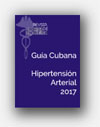Assessment and management of blood-pressure variability
Assessment and management of blood-pressure variability
Por: Gianfranco Parati, Juan E. Ochoa, Carolina Lombardi y Grzegorz Bilo. Nature Reviews Cardiology 10, 143-155 (March 2013).
 Blood pressure (BP) is characterized by marked short-term fluctuations occurring within a 24 h period (beat-to-beat, minute-to-minute, hour-to-hour, and day-to-night changes) and also by long-term fluctuations
Blood pressure (BP) is characterized by marked short-term fluctuations occurring within a 24 h period (beat-to-beat, minute-to-minute, hour-to-hour, and day-to-night changes) and also by long-term fluctuations
occurring over more-prolonged periods of time (days, weeks, months, seasons, and even years). Rather than representing ‘background noise’ or a randomly occurring phenomenon, these variations have been shown to be the result of complex interactions between extrinsic environmental and behavioural factors and intrinsic cardiovascular regulatory mechanisms. Although the adverse cardiovascular consequences of hypertension
largely depend on absolute BP values, evidence from observational studies and post-hoc analyses of data from clinical trials have indicated that these outcomes might also depend on increased BP variability (BPV).
Increased short-term and long-term BPV are associated with the development, progression, and severity of cardiac, vascular, and renal damage and with an increased risk of cardiovascular events and mortality.





![Glosario: hipertensión [Hipertensión arterial en la atención primaria de salud. 2009]](http://temas.sld.cu/hipertension/files/2016/04/Glosario-e1541006177950.jpg)



Comentarios recientes